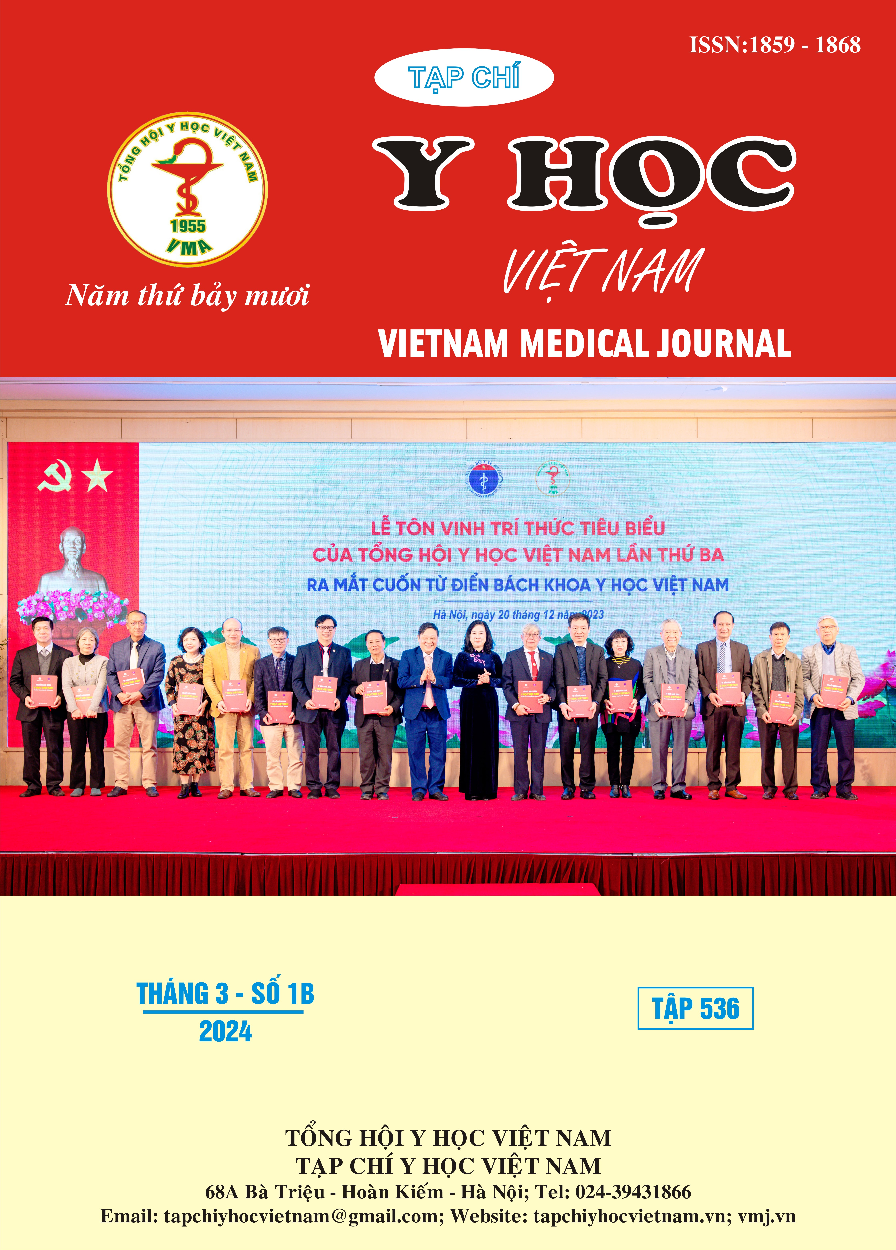RESULT OF LAPAROSCOPIC LIVER RESECTION FOR HEPATOCELLULAR CARCINOMA IN NGHE AN ONCOLOGY HOSPITAL
Main Article Content
Abstract
Objectives: This study aims to describe the clinical characteristics of HCC patients undergoing laparoscopic liver resection, as well as report the treatment outcomes. Subjects and Methods: A descriptive, retrospective, and prospective study was conducted on 172 patients with HCC who underwent laparoscopic liver resection. Results: The mean age of the patients was 57.6 years. Among the patients, 91.2% were classified as Child A. The majority of patients (37.2%) had an alpha-fetoprotein (AFP) concentration ranging from 20 to 400. Tumor size greater than 5cm accounted for 37.8% of cases, with 63 out of 172 patients having tumor sizes between 5 and 10cm. Among the patients, 166 (96.5%) underwent pure laparoscopic surgery. Minor liver resections were performed in 60.5% of cases, including 6 patients with caudate segmentectomy (3.7%) and 28 patients with posterior sectionectomy (16.8%), all of which were successfully conducted using pure laparoscopic techniques. Major liver resections accounted for 39.5% of cases, with 24 patients (13.9%) undergoing right hepatectomy, 28 patients (16.3%) undergoing left hepatectomy, 11 patients (6.4%) undergoing central hepatectomy, and 5 patients (2.9%) undergoing extended left liver resection. The average operative time was 113 minutes, the average hospital stay was 7.3 days, and the postoperative complication rate was 8.1%. The median overall survival time was 46.8 months. Conclusion: Laparoscopic liver resection demonstrates several advantages and is a feasible treatment option for hepatocellular cancer.
Article Details
References
2. Bruix J, Sherman M, American Association for the Study of Liver Diseases. Management of hepatocellular carcinoma: an update. Hepatology. 2011;53(3):1020-1022. doi:10.1002/hep.24199
3. Nguyễn Quang Nghĩa (2012), Nghiên Cứu Áp Dụng Đo Thể Tích Gan Bằng Chụp Cắt Lớp vi Tính Trong Chỉ Định, Điều Trị Phẫu Thuật Ung Thư Gan Nguyên Phát, Luận Án Tiến Sỹ y Học, Học Viện Quân Y, Hà Nội.
4. Trần Công Duy Long (2016), Đánh Giá Vai Trò Phẫu Thuật Nội Soi Cắt Gan Điều Trị Ung Thư Tế Bào Gan, Luận Án Tiến Sỹ y Học, Đại Học Y Dược Thành Phố Hồ Chí Minh, TP Hồ Chí Minh.
5. Kim JM, Kwon CHD, Yoo H, et al. Which approach is preferred in left hepatocellular carcinoma? Laparoscopic versus open hepatectomy using propensity score matching. BMC Cancer. 2018;18(1): 668. doi: 10.1186/ s12885-018-4506-3
6. Peng Y, Liu F, Xu H, Lan X, Wei Y, Li B. Outcomes of Laparoscopic Liver Resection for Patients with Multiple Hepatocellular Carcinomas Meeting the Milan Criteria: A Propensity Score-Matched Analysis. J Laparoendosc Adv Surg Tech A. 2019; 29(9): 1144-1151. doi: 10.1089/ lap. 2019.0362
7. Slakey DP, Simms E, Drew B, Yazdi F, Roberts B. Complications of Liver Resection: Laparoscopic Versus Open Procedures. JSLS. 2013; 17(1): 46-55. doi: 10.4293/ 108680812X13517013317716
8. Soubrane O, Goumard C, Laurent A, et al. Laparoscopic resection of hepatocellular carcinoma: a French survey in 351 patients. HPB (Oxford). 2014;16(4): 357-365. doi: 10.1111/ hpb.12142


